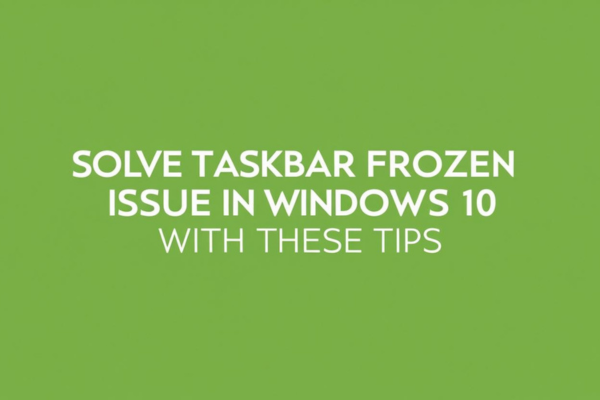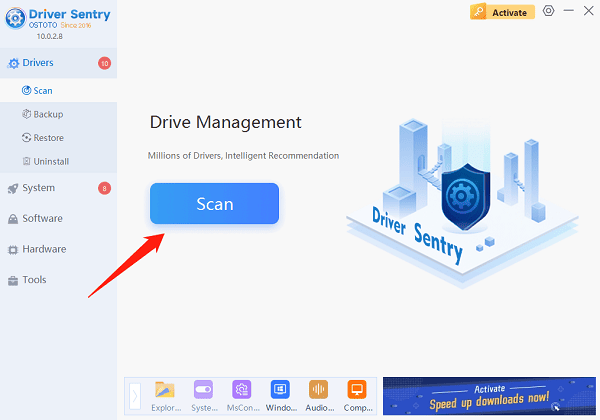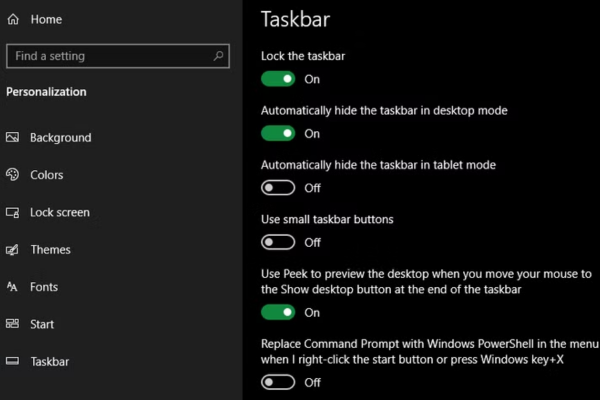If you're a Windows 10 user, you might have faced the frustrating situation of taskbar frozen. It's a common problem that can disrupt your workflow and make basic tasks a hassle. But don't worry; we've got you covered with a range of effective solutions. In this blog, we'll not only help you fix the taskbar not responding.

7 Effective Solutions to Fix Taskbar Frozen Issue
Clutter on the Taskbar
First things first, let's talk about clutter. The Windows 10 taskbar often comes with a bunch of unnecessary elements by default. For example, that long search bar takes up a lot of space. You can easily search by clicking the Start button or hitting the Win key, so why keep the bar? Right-click on the search box or an empty area of the taskbar. Then, select "Search" and change it to either "Show search icon" (a small magnifying glass) or Hidden to get rid of it completely.
Cortana has also become less relevant since Windows 10's release. If you don't use it, uncheck the "Show Cortana" button. The same goes for the "Show Task View" button; you can rely on the Win + Tab shortcut instead. On the right-hand side of the taskbar, there are more elements you might not need. Disable the "Show People on the taskbar", and if you don't use the features under Toolbars, turn them off. If you don't have a touchscreen, buttons like "Show Windows Ink Workspace" button and "Show touch keyboard button" are useless. Cleaning up this clutter can sometimes solve the taskbar frozen issue or prevent the Windows taskbar not working properly.
Restart the Explorer Process
When your taskbar is frozen or not responding, a simple yet effective first step is to restart the explorer.exe process. This process controls the Windows shell, which includes the File Explorer, taskbar, and Start menu. By restarting it, you can clear up minor glitches that might be causing the problem.

For this, hold down Ctrl + Shift + Esc to launch the Task Manager. If you see the simple window, click More details. On the Processes tab, find Windows Explorer. Right-click it and select Restart. You'll notice your taskbar disappearing and then coming back. This is normal, and with a bit of luck, your taskbar will start working correctly again. If this doesn't work, try signing out and back into your user account. And if you haven't restarted your PC in a while, that's also a good option.
Update Drivers and Windows
Outdated drivers, especially display drivers, can cause all sorts of problems with your Windows taskbar, including making it freeze or not respond. That's where PcGoGo Driver Sentry comes in. Driver Sentry is an excellent tool that can scan your system for outdated drivers and update them automatically. It's user-friendly and can save you a lot of time and hassle. Using PcGoGo Driver Sentry regularly can prevent the taskbar frozen issue and other Windows taskbar not working problems.
In addition to updating drivers, make sure you've installed all the latest Windows updates. Go to Settings > Update & Security > Windows Update. Sometimes, these updates contain patches that can fix strange taskbar issues. Keeping your system up-to-date is crucial for smooth operation.

Taskbar Icons Missing: Troubleshooting Steps
When your Windows 10 taskbar icons are missing and the System Tray at the bottom-right doesn't show the clock and other functions, it can be a real headache. But you can fix it using some commands in the Command Prompt.
Use the Win + X shortcut (or right-click the Start button) to open the Power User menu. From there, launch a Command Prompt (Admin), Windows PowerShell (Admin), or Windows Terminal (Admin). First, try the SFC command. In the prompt, type `sfc /scannow` and hit Enter. This runs the System File Checker utility to fix Windows issues. After it's done, reboot your computer. If this doesn't work, try another utility. Enter the command `DISM /Online /Cleanup-Image /RestoreHealth` and reboot. These steps can often solve the problem of missing taskbar icons and get your taskbar working again.
Taskbar Not Hiding: What to Do
If you've enabled the auto-hide feature for your Windows 10 taskbar but it's not working, there are a few things you can try. First, double-check that the auto-hide is actually enabled. Head to Settings > Personalization > Taskbar and make sure Automatically hide the taskbar in desktop mode is turned on. You can also try disabling and re-enabling this option; sometimes, it gets stuck, and toggling it can fix the problem.
Often, an app that requires your attention can prevent the taskbar from hiding. Cycle through your open apps and check for any error messages or alerts. It could be a browser with a website notification or a chat client with a new message. If that doesn't work, look at the apps in your System Tray. One of the background-running apps might be the culprit. If this is a recurring issue, adjust the Windows notifications for the problem app. Go to Settings > System > Notifications & actions and disable the notifications you don't want. You can also check the app's own settings for more control. If all else fails, reinstall the app.

Taskbar Not Responding: PowerShell Fixes
If your taskbar is not responding or frozen, and you can't click on anything, PowerShell can be a lifesaver. Type PowerShell into the Start menu, right-click its entry, and choose Run as administrator. Enter the command `Get-AppXPackage -AllUsers | Foreach {Add-AppxPackage -DisableDevelopmentMode -Register "$($_.InstallLocation)\AppXManifest.xml"}`. This re-registers all apps, which might fix the taskbar frozen issue.
After that, navigate to C:\Users\[Your Username]\AppData\Local. Find the TileDataLayer folder and delete it. This should, hopefully, unfreeze your taskbar and let you click on items normally. If your taskbar is still frozen, there's a more drastic solution. But be warned, this will remove all Windows 10 apps, including the Microsoft Store, from your system. Only use this if you don't mind losing those apps and nothing else has worked. Open PowerShell with admin rights and input the commands `Get-AppxPackage | Remove-AppxPackage` and `Get-AppxProvisionedPackage -Online | Remove-AppxProvisionedPackage -online`. Then restart your system.
System Restore or New User Account
If you've tried all the above methods and your taskbar is still misbehaving, you can try a System Restore. If you have a restore point, it can take your system back to a time before the taskbar issues started. If that doesn't work, creating a new Windows user account might be the solution. It's a bit inconvenient, but it can clear up persistent problems. Open the Settings app (Win + I), go to Accounts > Family & other users, and under the Other Users section, select Add someone else to this PC. Follow the account creation process. If you're replacing your own account, choose I don't have this person's sign-in information and then Add a user without a Microsoft account to avoid confusion.
Conclusion
In conclusion, dealing with a taskbar frozen issue or other problems like the Windows taskbar not working can be frustrating. But with these tips and the help of PcGoGo Driver Sentry, you can keep your Windows 10 taskbar in top-notch condition. So, don't let a misbehaving taskbar get you down; try these solutions and get back to smooth computing.